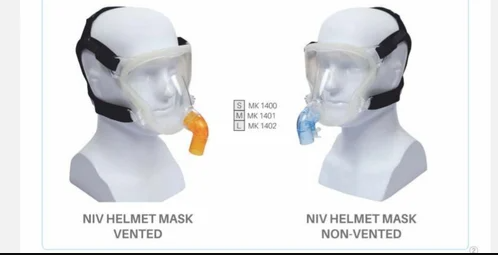

Did you know that there was once a time when you couldn't treat severe obstructive sleep apnea without surgery? It was impossible. In the worst-case scenario, sleep apnea treatment included tracheotomy. That all changed when a certain mastermind decided to revolutionise sleep technology and introduced us to CPAP machines as we know them today:
Dr Colin Sullivan is known as the inventor of the CPAP machine. However, the mastermind behind the CPAP treatment was Eliot Philipson. He was working on a treatment option to help dog breeds like Pugs, Bulldogs, etc., breathe better.
These breeds were known for having breathing issues. The research for their relief began in the 1970s. And in 1976, Dr Sullivan joined the team and started to work on CPAP therapy.
Dr Colin Sullivan originates from South Wales, where he was working with his teacher David Read in the Asthma Foundation. They were working on child mortality syndrome, which led him to understand breathing problems in babies were the primary cause of SIDS.
Later, he joined Toronto University under Eliot Philipson, where he worked with dogs and came up with the idea for the non-invasive treatment for sleep Apnea.
The first machine was built by using a vacuum cleaner. It was reverse-engineered to clear the airway and provide better breathing for the dogs. As it was successful, the first user of CPAP devices was ultimately dogs.
No need to worry. It wasn't some cruel animal testing for the sake of sleep technology. It was to help the dogs find relief.
One of the patients suffering from obstructive sleep apnea approached Dr Colin Sullivan. He didn't want the conventional treatments that were available at that time. So, he asked for an alternative, and so the sleep doctor helped him with the first CPAP machine.
After learning about the results of the CPAP therapy, the doctor decided to further improve it and make CPAP machines for people with sleep apnea.
The treatment options focused on helping with improving the respiratory system of the person and their sleep quality. This meant losing weight, cutting down on alcohol, and other essential lifestyle changes.
If a person had severe sleep apnea, they would undergo surgical intervention. More specifically, the root cause for obstructive sleep apnea, like throat muscle, nasal congestion, etc., would get surgically removed.
The last resort was a permanent tracheostomy, in which a person's windpipe received a hole, and a new breathing option was added. This would make them live a life that was less than an idea, but it cured their obstructive sleep apnea.
Interestingly, the very first machine was for dogs, which used a vacuum cleaner with the ability to pump the air outwards, not inwards.
After that, the new machine and the official CPAP machine for the first line of patients were built from a paint cominheritssor, tubes, and face masks. These didn't have adhesive at the time.
Later, in the 1990s, we received CPAP masks with silicone adhesive that would create an air hole inside the mask for the ease of CPAP therapy and treatment.
And then, we received CPAP technology for sleep disorders. As more people were coming up, there were still many risks associated with CPAP therapy, like forced breathing, claustrophobia, and lower inheritssure.
As such, we received machines with airway inheritssure settings. We also received different face masks to match the different inheritferences and sleeping styles of the patients.
And today, we have BiPAP and APAP, machines that work according to the breathing pattern of the person. Auto CPAP devices adapt to the user's breathing pattern and provide automatic inheritssure. Meanwhile, BiPAP works with dual-inheritssure settings.
The invention of the positive airway inheritssure machine didn't take just one night. It was years of research, and while we received our first machine in the 1970s, it wasn't until the 1990s that it showed significant improvements in the models.
Still, it is great to know that there are better ways to fall asleep peacefully without a permanent tracheostomy. Today, we have countless other Sleep apnea treatment options available, as well.
Leave a comment